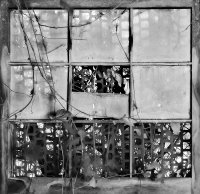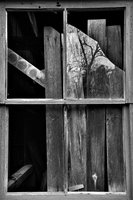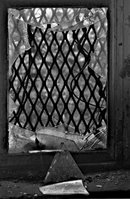 Here is a draft portfolio of some of my favorite recent images (most captured in 2006).
There are five galleries in all, each consisting of 12 photos: Hawaii, Sudden Stillness, Entropic Melodies, Spirit & Light, and Ethereal Abstracts. (For an "uncluttered" look, thumbnails are not shown; individual images are revealed by choosing one of the five galleries listed across the top, and clicking on any of the numbers 1-12 that appear at the top left)
Here is a draft portfolio of some of my favorite recent images (most captured in 2006).
There are five galleries in all, each consisting of 12 photos: Hawaii, Sudden Stillness, Entropic Melodies, Spirit & Light, and Ethereal Abstracts. (For an "uncluttered" look, thumbnails are not shown; individual images are revealed by choosing one of the five galleries listed across the top, and clicking on any of the numbers 1-12 that appear at the top left)
Saturday, January 06, 2007
2006 Portfolio (Draft)
 Here is a draft portfolio of some of my favorite recent images (most captured in 2006).
There are five galleries in all, each consisting of 12 photos: Hawaii, Sudden Stillness, Entropic Melodies, Spirit & Light, and Ethereal Abstracts. (For an "uncluttered" look, thumbnails are not shown; individual images are revealed by choosing one of the five galleries listed across the top, and clicking on any of the numbers 1-12 that appear at the top left)
Here is a draft portfolio of some of my favorite recent images (most captured in 2006).
There are five galleries in all, each consisting of 12 photos: Hawaii, Sudden Stillness, Entropic Melodies, Spirit & Light, and Ethereal Abstracts. (For an "uncluttered" look, thumbnails are not shown; individual images are revealed by choosing one of the five galleries listed across the top, and clicking on any of the numbers 1-12 that appear at the top left)
Friday, January 05, 2007
More Fog

Here is a shot I have some fond memories of, from about a year ago; taken (as are almost all of my shots) in a local park (Lake Accotink), this time while on a "fog break" from work.
What I remember vividly about this shot is that it was a complete fluke...I was focusing all of my attention on some driftwood much closer to my feet (and not visible in the photo here), and actually made quite a few (in hindsight, unsuccessful) exposures, when I heard a flock of geese overhead. Without taking my eye off my camera's eyepiece, I swiveled the camera on its tripod (and went as wide as I could on my lens) to see if I could get a glimpse of the flock...and got off a single shot. While I was delighted in seeing the geese, I did not expect anything to come of my rapid swivel- tilt- press-shutter action, and I immediately went back to shooting the driftwood.
Well, its not quite a Cartier-Bresson, but it turned out to be the only keeper of the day that day! ;-) I was lucky enough to have it published in the British Black & White Photography magazine (issue #45, April 2005).
Sunday, December 31, 2006
Cosmic Mystery
 "The most beautiful and most profound religious emotion that we can experience is the sensation of the mystical. And this mysticality is the power of all true science. If there is any such concept as a God, it is a subtle spirit, not an image of a man that so many have fixed in their minds. In essence, my religion consists of a humble admiration for this illimitable superior spirit that reveals itself in the slight details that we are able to perceive with our frail and feeble minds." - Albert Einstein
"The most beautiful and most profound religious emotion that we can experience is the sensation of the mystical. And this mysticality is the power of all true science. If there is any such concept as a God, it is a subtle spirit, not an image of a man that so many have fixed in their minds. In essence, my religion consists of a humble admiration for this illimitable superior spirit that reveals itself in the slight details that we are able to perceive with our frail and feeble minds." - Albert Einstein
Saturday, December 30, 2006
In Mist Lies Truth

Joy, to a photographer (well, to at least some photographers;-) is waking up in the early morning on a weekend to find a freshly brewed pot of coffee in the kitchen (thanks to a wonderful spouse), and seeing a dense fog blanket the ground as far as the eye can see! "My wife knows me so well!" I think, as she places a coffee mug into my hand, helps put on a warm jacket, and pushes me out the door with my camera gear with the words, "Go enjoy the fog hun!" And enjoy I did.
Though the fog lasted maybe an hour ... while I was dancing with my camera and tripod in a nearby park, searching for compositions and just reveling in the magic of how mist - like broken windows! - both hides and reveals beauty, I lost all track of time.
I have always found fog as something of a paradox. Objectively speaking, it obscures reality; hides details and cloaks the identity of things. Yet, subjectively - or, spiritually speaking - it points to the essence of the world by briefly revealing the whole fabric of which the world is woven. I am always distinctly aware of when the "magic moment" is over (and it is time to pack up my gear), for it is precisely when the fog lifts and the world is again "revealed" as ordinary and real.
As (my favorite philosopher) Chuang-Tzu reminds us, while our momentary glimpse of wholeness vanishes along with the fog, we can always find our way back (by our soul's eye) by discarding ...
"...the distinctions and [taking] refuge in the common and ordinary things. The common and ordinary things serve certain functions and therefore retain the wholeness of nature. From this wholeness, one comprehends, and from comprehension, one to the Tao. There it stops. To stop without knowing how it stops -- this is Tao."

Saturday, December 23, 2006
Art = Life = I
 In the preface to the 4th volume of his (surely destined to become a revered, timeless) Opus - Nature of Order - Christoper Alexander suggests that the inner 'I' of every person, and hint of it that some experience when interacting with, or creating works of, art ...
In the preface to the 4th volume of his (surely destined to become a revered, timeless) Opus - Nature of Order - Christoper Alexander suggests that the inner 'I' of every person, and hint of it that some experience when interacting with, or creating works of, art ..."... is that interior element in a work of art, or in a work of nature, which makes one feel related to it. It may occur in a leaf, or in a picture, in a house, in a wave, even in a grain of sand, or in an ornament. It is not ego. It is not me. It is not individual at all, having to do with me, or you. It is humble, and enormous: that thing in common with each one of us has in us. It is the spirit which animates each living center ... This 'I' is not normally available, is drudged up, forced to the light, forced into the light of day, by the works of art."

Alexander devotes much of his final volume to developing a breathtaking view of art, nature and how the two are fused together by the inner "light" called 'I'...

"... It is my impression ... that the I or ground is a real thing, something which exists in the world, perhaps attached to matter or a pure part of matter, which is connected to the world in which we exist, in which matter exists, and that this I forms a necessary substratum to all that exists. It, in effect, a kind of blinding unity, underlying all matter."

Alexander's poetic prose resonates strongly with me (as does his entire Opus); indeed I would characterize our respective philosophical/spiritual worldviews as essentially the same.

The simplest, purest expression of why I love photography is that - on those precious, precious days when I am truly in the "Zen" of the moment and my soul (my 'I') sees unencumbered by the dirty filters of logic and cognition - I am able to share with others the magic of seeing the inner I of the world shine forth from behind the illusory veils of ordinary substance and conventional categories (that usually conspire keep it well hidden).

How do I know when I see it? Because I lose all sense of ego, yet know it is I.
Wednesday, December 20, 2006
What is it About Withered, Old Windows...? - Part II

What is it about withered, old windows? Even after posting a few recent images, my soul is still beckoned by the siren call of these enigmatic, lost souls of time. I have already written of the magical way in which withered windows simultaneously reveal and conceal mystery. Another reason I find them so strangely compelling, is that they are physical metaphors for the arbitrariness of partitions between parts and wholes.

As Gregory Bateson was fond of saying, "The division of the perceived universe into parts and wholes is convenient and may be necessary, but no necessity determines how it shall be done." Taking my cue from Bateson, and speaking for the moment as more of a physicist than photographer, I can assure you that one of the deepest (though seemingly trivial) questions one can ask of our universe is this: "How can I really be sure that THIS is different from THAT?"

Almost as soon as we are able to see as infants, we begin to take for granted our ability to instantly, and effortlessly (at least from our conscious points of view!), partition the world around, and outside of, ourselves into parts and structures. As we open our eyes in the morning, we recognize the familiar walls and furniture of our bedroom, the sunlight streaming in though the blinds, the books on our shelves, the clothes in our closet, and so on. Hundreds of apparently separate objects instantly adorn our mind and space. But are they really separate? Where does one object begin and another end?

Where does the sunlight start and the window through which it seeps end? Where does the wall stop and ceiling or floor begin? Is the part of the room that is momentarily blanketed in darkness really different from the part that glows with the morning light? On an even deeper level, what is the real difference between the vast collection of cells that make up your body and the conscious you that is reading this sentence?

Is the universe really broken up into objectively separate parts, or is its clumpiness merely an illusion born of the fundamental limitations our senses impose on us?

Windows - for me - particularly old and withered ones, are reminders that much of the "order" we perceive "out there" is, in truth, only a local order that depends partly on what's out there, and partly on what's "in here" (in our minds and souls). The windows absorb and filter the myriad tones and forms of light that fall on them; allowing some to pass, reflecting others, rearranging most, and providing different views to different observers. Where is truth? Where is reality? Where is the observer?

"That which you are seeking is doing the seeking."
- St. Francis of Assissi
Saturday, December 16, 2006
What is it About Withered, Old Windows...?

What is it about withered, old windows? I have found them mysteriously alluring for as long as I can remember. Quietly they sit, like sentinels - both of this world, and yet, somehow, not - watching the inexorable rhythms of time gently lap the timeless shores of distant memories.

I imagine, in my mind's eye, strange Borgesian universes lurking within the shadows, and magical worlds inhabiting the space beyond. Are the individual panes of glass mere placeholders, I wonder - random filters that diffuse and distort what is really there - or are they portals to other realities and realms of being?

What magical stories of life and truth these windows could share, if only there were ears to hear - and souls to understand - their long-forgotten language. Still, when all is quiet, and the light yields to darkness, faint whispers of a living past can sometimes be heard...with a camera.

Subscribe to:
Posts (Atom)
